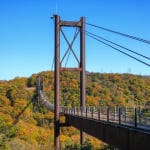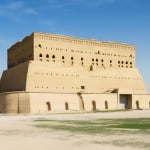Name: Noboribetsu Jigokudani (Hell Valley)
Address: Noboribetsu Onsencho, Noboribetsu City, Hokkaido, Japan
Official Website:http://noboribetsu-spa.jp/see_activitie/noboribetsu_jigokudani/
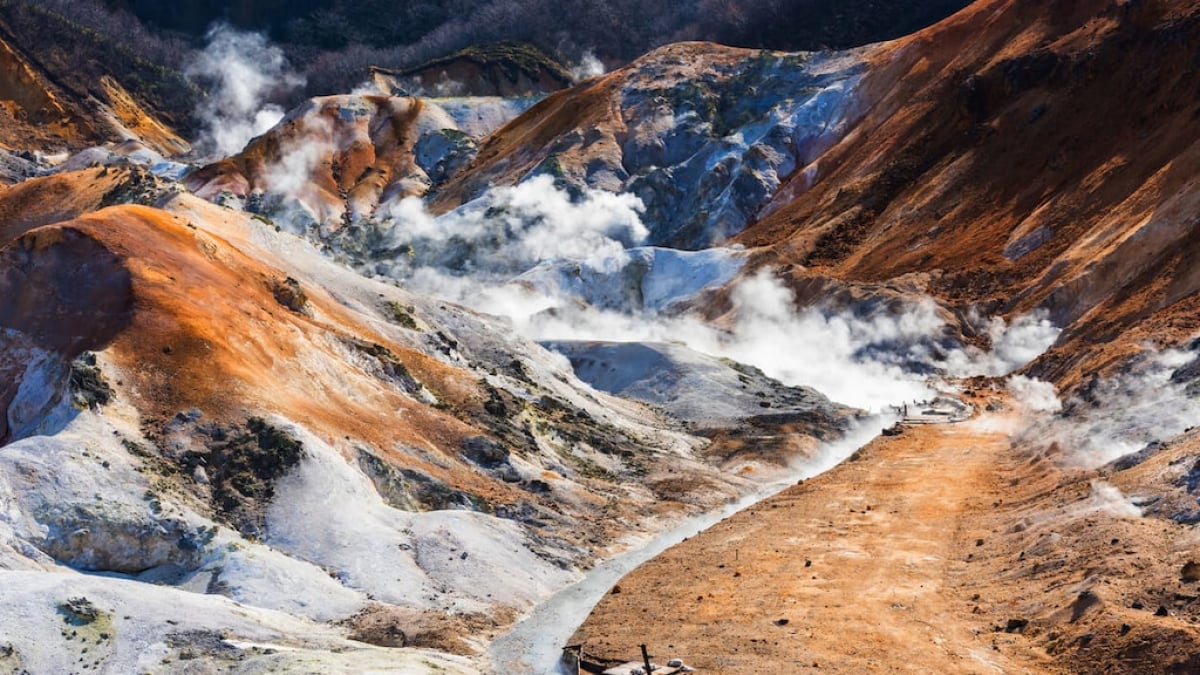
More Than Just Hot Springs! 15 Must-Visit Attractions in Noboribetsu
When you hear Noboribetsu, the first thing that likely comes to mind is Noboribetsu Onsen, one of Japan’s most famous hot spring resorts. It’s a popular destination not only for Japanese tourists but also for visitors from around the world. Many travelers come for the relaxing hot springs and return home without exploring beyond their accommodations.
However, Noboribetsu has so much more to offer than just its renowned hot springs! From breathtaking natural landscapes to unique cultural experiences, this charming destination is packed with must-see attractions.
In this guide, we’ve carefully selected 15 top attractions in Noboribetsu, including seasonal events you won't want to miss. Discover the best things to do and make the most of your trip to this fascinating region!
table of contents
[x] close
More Than Just Hot Springs! 15 Must-Visit Attractions in Noboribetsu
- 1. Noboribetsu Jigokudani (Hell Valley)
- 2. Yakushi Nyorai Hall (Noboribetsu Onsen)
- 3. Tessen Pond (Tessen Ike) – Noboribetsu Onsen Jigoku (Hell Valley)
- 4. Oyunuma
- 5. Oku no Yu (Noboribetsu Onsen)
- 6. Oyunuma River Natural Footbath (Noboribetsu Onsen)
- 7. Demon Statues: The Iconic Guardians of Noboribetsu Onsen
- 8. Sengen Park Geyser
- 9. Noboribetsu Bear Park
- 10. Noboribetsu Marine Park Nixe
- 11. Noboribetsu Date Jidaimura
- 12. Sanlaiva Ski Resort
- 13. Noboribetsu Cultural Exchange Center "Kanto Rera"
- 14. Noboribetsu City Museum & Cultural Heritage Center
- 15. Noboribetsu Onsen Event Information
- [Event 1] Jigokudani Demon Fireworks
- [Event 2] Restricted Area: Jigokudani (Hell Valley) Backyard Tour
- [Event 3] Noboribetsu Karurusu Ice Pillar Tour
- ◎ Best Tourist Attractions in Noboribetsu Onsen
1. Noboribetsu Jigokudani (Hell Valley)
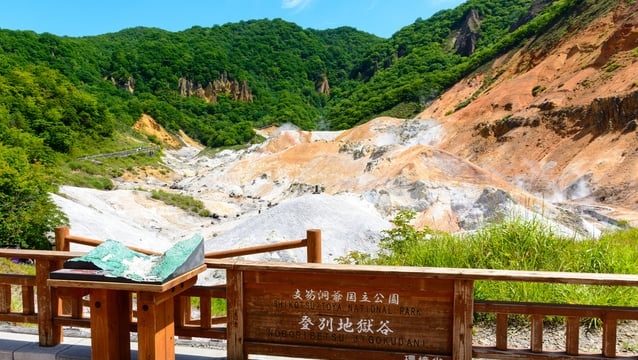
Noboribetsu Jigokudani, or Hell Valley, is a massive explosion crater formed by the volcanic activity of Mt. Hiyoriyama. Numerous fumaroles and hot spring vents scattered throughout the valley constantly emit volcanic gases and geothermal water. These high-temperature waters supply Noboribetsu Onsen, one of Hokkaido’s most famous hot spring resorts, providing thermal baths to many ryokan and hotels. Even during winter, visitors can witness the billowing steam rising from the ground while feeling the warmth radiating from the earth, creating a breathtaking and almost mystical landscape.
The name "Jigokudani" (Hell Valley) originates from the boiling hot springs flowing through the valley, resembling a scene of “hell inhabited by demons.” Approximately 10,000 tons of hot spring water gushes out daily from this area, making it the lifeline of Noboribetsu Onsen. This is why the valley is often referred to as the "Mother of Noboribetsu Onsen."
Near the entrance of Jigokudani, the Noboribetsu Park Service Center offers free rental services for boots and umbrellas, ensuring visitors can enjoy the walking trails regardless of weather conditions. Even after rain, the well-maintained trails allow for a pleasant stroll through the valley. The center also features exhibits and informational displays about Noboribetsu Onsen, making it a great place to learn about the region’s history and geothermal activity before exploring.
2. Yakushi Nyorai Hall (Noboribetsu Onsen)
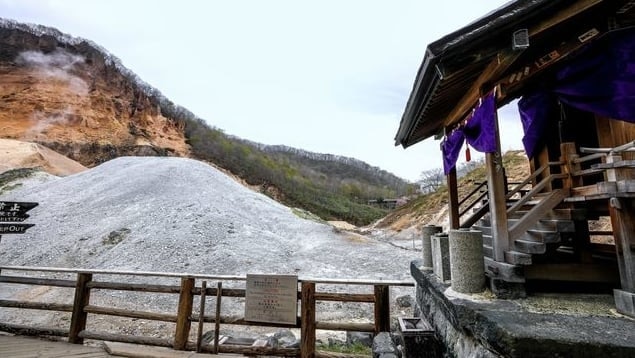
Near Yakushi Nyorai Hall, a natural hot spring known as "Me-no-Yu" (Eye Spring) has been flowing for centuries. According to legend, in 1861 (Bunkyū Era 1), a retainer of the Nanbu Clan who was mining sulfur in the area suffered from an eye disease due to a sword injury. However, after washing his eyes with the hot spring water beneath the temple, his vision miraculously recovered.
Out of gratitude, the retainer donated a stone monument, which is believed to have evolved into the present-day Yakushi Nyorai statue. Whether you have eye problems or not, visiting Yakushi Nyorai Hall might bring you blessings and good fortune.
Name: Yakushi Nyorai Hall
Address: Noboribetsu Onsencho, Noboribetsu City, Hokkaido, Japan
Official Website:https://noboribetsu-spa.jp/spot/spot0097/
3. Tessen Pond (Tessen Ike) – Noboribetsu Onsen Jigoku (Hell Valley)
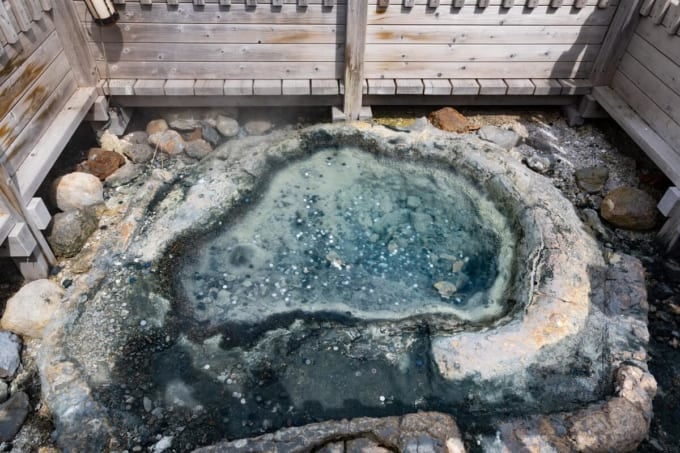
As you walk further along the nature trail in Hell Valley (Jigokudani), you will come across Tessen Pond, a geothermal hot spring surrounded by wooden fences.
Located near the center of Hell Valley, this pond is an intermittent geyser that once erupted every few minutes, creating loud bubbling sounds and sending bursts of hot water into the air. However, its activity has significantly declined, and today, it remains in a tranquil state, offering a different kind of charm.
Name: Tessen Pond (Tessen Ike)
Official Website:https://noboribetsu-spa.jp/spot/spot0059/
4. Oyunuma
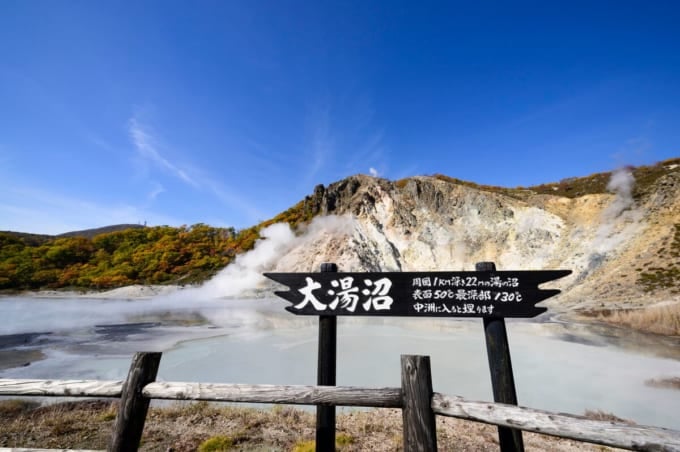
Oyunuma is a volcanic crater lake formed from an explosive eruption, much like Noboribetsu’s famous Jigokudani (Hell Valley). Measuring about 22 meters deep and 1 kilometer in circumference, this lake is shaped like a gourd.
The surface temperature of Oyunuma ranges between 40 to 50°C, making it appear relatively calm. However, beneath its waters, sulfuric hot springs reach an intense 130°C, showcasing the region’s powerful geothermal activity. This dramatic natural landscape offers visitors a glimpse of Earth’s raw energy.
A well-maintained hiking trail connects Hell Valley to Oyunuma, with scenic viewpoints along the way that provide breathtaking panoramic views of the lake.
Name: Oyunuma
Official Website:https://noboribetsu-spa.jp/spot/spot0055/
5. Oku no Yu (Noboribetsu Onsen)
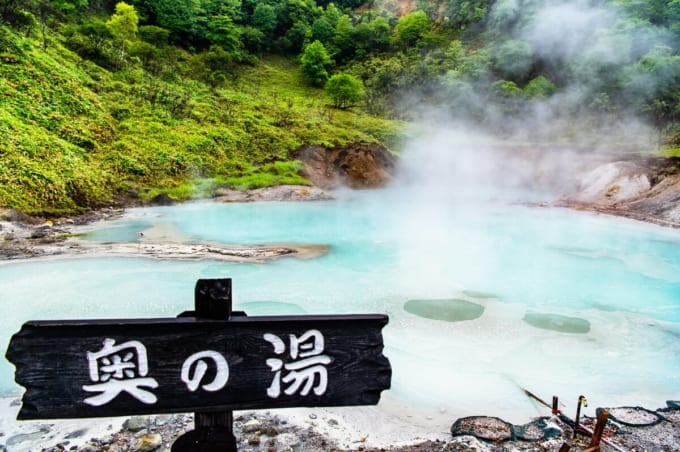
Oku no Yu is part of a phreatic explosion crater, where the surface temperature of the pond can reach around 80°C, and hydrogen sulfide hot springs continuously emerge. Near the front and center of the pond, the surface vigorously bubbles like a boiling cauldron, creating a dynamic and powerful sight.
For safety reasons, visitors cannot approach the pond directly, but they can observe this impressive natural phenomenon up close from behind a fence. While the hot spring composition is the same as Oyunuma, there is a key difference—sediments accumulate at the bottom of Oyunuma, whereas in Oku no Yu, they flow out instead of settling.
A visit to Oku no Yu is highly recommended for those exploring the Jigokudani (Hell Valley) area, offering a rare chance to witness the raw power of nature.
Name: Oku no Yu
Address: Noboribetsu Onsen-cho, Noboribetsu City, Hokkaido
Official/Related Website:https://noboribetsu-spa.jp/spot/spot0063/
6. Oyunuma River Natural Footbath (Noboribetsu Onsen)
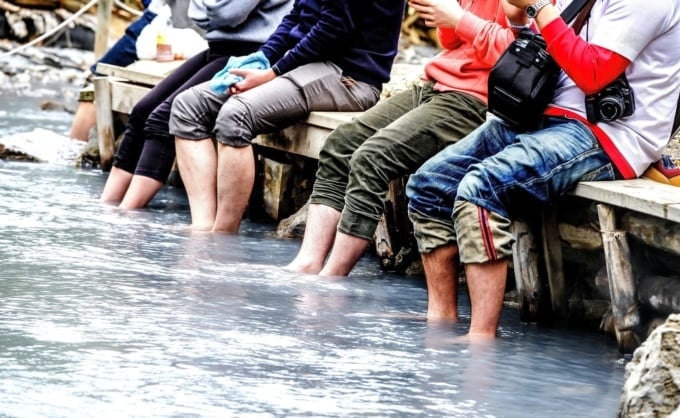
The Oyunuma River Natural Footbath is a relaxing spot where visitors can soak their feet in naturally heated waters flowing from Oyunuma. Located about a 10-minute hike from Oyunuma along a scenic nature trail, this footbath offers an immersive experience in the heart of nature. The area is surrounded by lush forests, allowing visitors to unwind while listening to the gentle flow of the river and the sounds of birds chirping.
As the hot spring water from Oyunuma cools naturally while flowing downstream, it forms a natural footbath, making it a unique and rejuvenating stop along the trail. Best of all, it is free to use, making it an easily accessible and budget-friendly attraction. Bringing a towel or a cloth to dry your feet afterward is recommended.
Name: Oyunuma River Natural Footbath
Official/Related Website:
7. Demon Statues: The Iconic Guardians of Noboribetsu Onsen
Noboribetsu Onsen is widely recognized as "The Hot Spring of Demons" (鬼の湯, Oni no Yu), a name inspired by its powerful geothermal activity in Jigokudani (Hell Valley). As a tribute to this fiery landscape, the area is home to numerous oni (demon) statues, serving as symbolic guardians of the hot spring town. These statues, varying in size and color, are scattered throughout Noboribetsu Onsen, welcoming visitors and adding to the mystical charm of the region.
◆ Welcoming Demon Parent and Child Statue
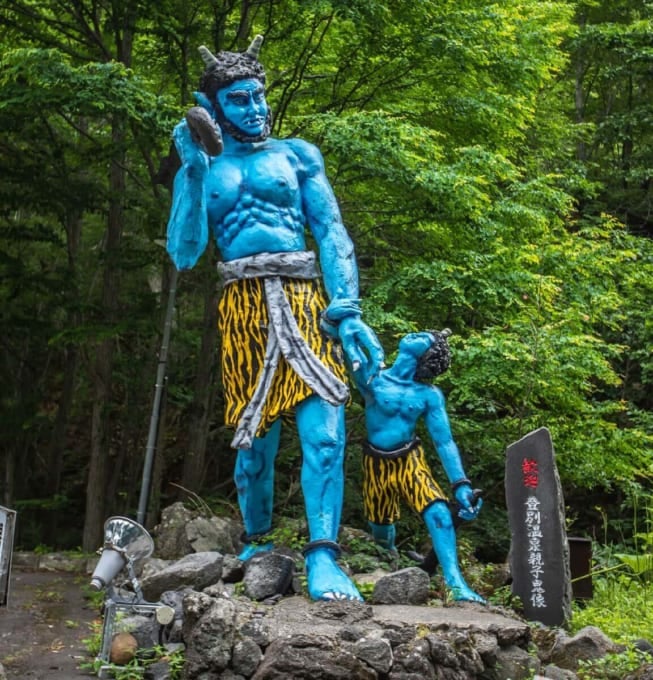
Located along the road leading to Ōyunuma River Natural Footbath, the blue oni parent and child statue captures the heartwarming bond between a father and his child. Unlike the usual fearsome demon imagery, these statues display gentle expressions, evoking a sense of warmth and hospitality.
However, their sheer size is impressive—so much so that an adult human appears smaller than the child demon! Upon closer inspection, the craftsmanship is incredibly lifelike, making them look as if they could come to life at any moment. This parent-child oni statue has become an iconic symbol of Noboribetsu Onsen, leaving a lasting impression on visitors.
Name: Welcoming Parent and Child Demon Statue (歓迎 親子鬼像)
Official Website:https://noboribetsu-spa.jp/spot/spot0107/
◆ Demon Shrine – Nenbutsu Oni Statues

At a historic shrine dating back to the Edo period, two guardian demons stand watch: a standing red oni and a seated blue oni. These are known as the Nenbutsu Oni Statues (鬼祠-念仏鬼像, Oni Bokora Nenbutsu Kizō).
In contrast to the friendly parent-child statues, these oni have a fierce and intimidating appearance. However, their solemn expressions reflect their role as protectors of the shrine, ensuring its safety and spiritual presence. While they may seem fearsome at first glance, their presence reassures visitors that they are keeping watch over Noboribetsu Onsen.
Name: Demon Shrine – Nenbutsu Oni Statues (鬼祠-念仏鬼像)
Official Website: Noboribetsu Onsen Tourism
◆ JR Noboribetsu Station Welcome Oni Statue (Noboribetsu Onsen)

At JR Noboribetsu Station, visitors are greeted by the Welcome Oni Statue, a towering figure standing over 2 meters tall. This striking red oni (demon) is a symbol of Noboribetsu Onsen, welcoming travelers with its warm presence.
Unlike fearsome depictions of demons, this statue has a friendly expression, making it an inviting landmark. Inspired by Noboribetsu’s oni legends and the famous Jigokudani (Hell Valley), it serves as an iconic entrance to the hot spring town.
Name: JR Noboribetsu Station Welcome Oni Statue
Official/Related Website:https://noboribetsu-spa.jp/spot/spot0122/
◆ Noboribetsu Higashi Interchange Welcome Oni Statue
Located at Noboribetsu Higashi Interchange, this massive oni statue stands at approximately 18 meters tall and weighs around 18 tons, making it an unmissable landmark. Despite its imposing size, the statue has a welcoming charm, perfectly embodying Noboribetsu’s legendary demons and Hell Valley’s dramatic landscape.
For travelers arriving by car, this Welcome Oni Statue is the first major landmark after exiting the Noboribetsu Higashi Interchange. It creates an exciting and unforgettable introduction to the famous Noboribetsu Onsen.
Name: Noboribetsu Higashi Interchange Welcome Oni Statue
Official/Related Website:https://noboribetsu-spa.jp/spot/spot0120/
◆ Yukake Kizō (Hot Water-Pouring Oni Statue) – Noboribetsu Onsen
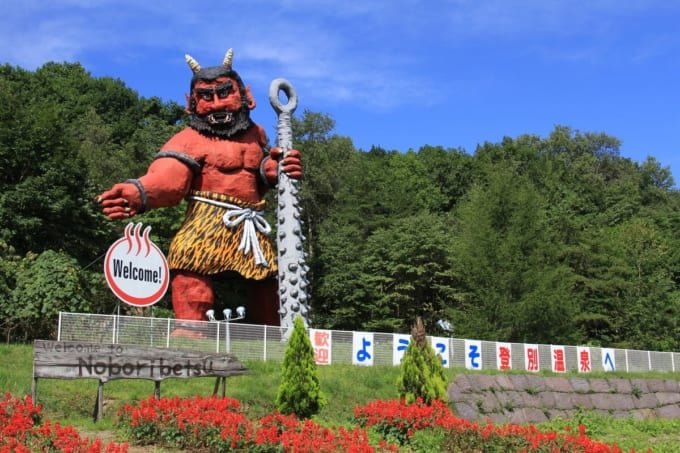
Yukake Kizō, located in Noboribetsu Onsen, is a unique attraction based on Noboribetsu’s legendary demons and the region’s hot spring culture. This statue portrays an oni being doused with onsen water, offering a playful yet symbolic representation of the town’s history and traditions.
Visitors can witness a real hot spring water-pouring performance, making it an interactive and entertaining spot. Surrounding the statue are artistic elements and informative displays about the cultural significance of onsen and oni legends. More than just a sightseeing spot, Yukake Kizō immerses visitors in the rich folklore of Noboribetsu Onsen.
Name: Yukake Kizō (Hot Water-Pouring Oni Statue)
Official/Related Website:https://noboribetsu-spa.jp/spot/spot0109/
◆ Symbolic Oni – Prosperity in Business

Noboribetsu Onsen is home to several Symbolic Oni statues, each believed to grant specific wishes when touched. These statues are cherished by both tourists and locals as powerful symbols of fortune.
The Symbolic Oni for Business Prosperity holds a golden club inscribed with “商売繁盛” (Shōbai Hanjō, meaning “business prosperity”) and raises its left hand, similar to a Maneki-neko (beckoning cat). This statue is believed to bring success and economic prosperity, making it a popular spot for business owners and entrepreneurs seeking good fortune in their ventures.
Name: Symbolic Oni – Prosperity in Business
Official Site:https://noboribetsu-spa.jp/spot/spot0112/
◆ Symbolic Oni – Academic Success
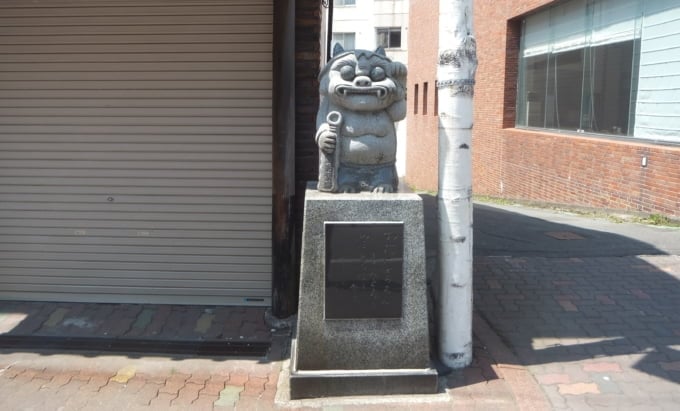
The Symbolic Oni for Academic Success represents the strength to overcome challenges. It is a popular spot for students preparing for exams, offering motivation and confidence to those seeking success in their studies.
Standing in a powerful pose, this oni symbolizes determination and perseverance, inspiring visitors to overcome difficulties and achieve their academic goals. During exam season, many students visit this statue, believing that touching it will help them pass their exams.
Name: Symbolic Oni – Academic Success
Official Site:https://noboribetsu-spa.jp/spot/spot0117/
◆ Symbolic Oni – Love Fulfillment
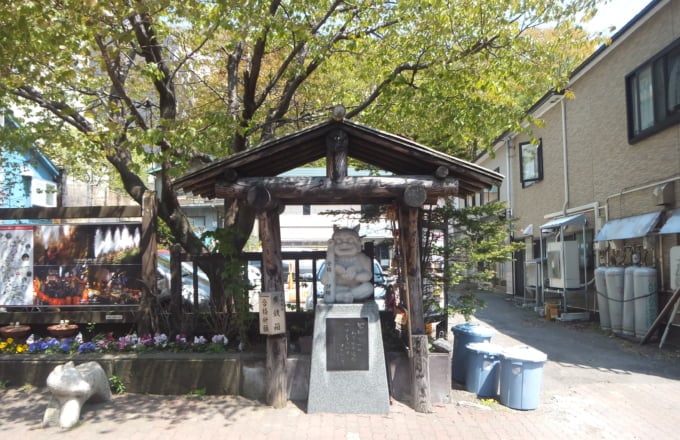
The Symbolic Oni for Love Fulfillment stands as a romantic symbol, featuring a pair of oni standing close together like a couple. Many visitors believe that touching the statues or taking photos with them will enhance their love of luck.
Whether you’re seeking a new romance or strengthening your current relationship, this oni is said to bring love and happiness. It is a popular spot for couples and those wishing to find their soulmate.
Name: Symbolic Oni – Love Fulfillment
Official Site:https://noboribetsu-spa.jp/spot/spot0114/
◆ Enmado ~ The Enma Daio Karakuri Float and the Noboribetsu Hell Festival

The Enma Daio Karakuri Float, created in celebration of the 30th anniversary of the Noboribetsu Hell Festival, parades through the Noboribetsu Onsen hot spring town every August during the festival. This lively event brings a fiery atmosphere to the entire onsen district, featuring demon-themed performances, including demon mikoshi (portable shrines) and oni dances, making it a must-see attraction.
Even outside of the festival period, Enmado offers six daily performances of its mechanized Enma Daio, a spectacle that has become a symbol of Noboribetsu Onsen. Tourists flock to this attraction to witness the impressive display of Enma Daio's dynamic movements, making it a must-visit spot in Hokkaido's famous hot spring town.
Name: Enmado (閻魔堂)
Address: Noboribetsu Onsencho, Noboribetsu, Hokkaido
Official Website:https://noboribetsu-spa.jp/spot/spot0103/
8. Sengen Park Geyser
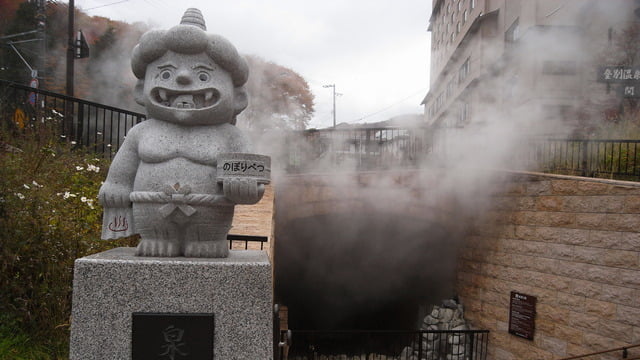
The Sengen Park Geyser is a natural hot spring phenomenon, erupting boiling water from underground approximately every three hours. This geyser symbolizes the abundant geothermal resources of Noboribetsu Onsen, providing visitors with an opportunity to experience the raw power of nature up close.
The park is well-equipped with benches and relaxation areas, allowing visitors to wait comfortably for the next eruption while enjoying the tranquil atmosphere of the onsen town. When the geyser finally erupts, it shoots steaming hot water powerfully into the air, offering a breathtaking natural spectacle. Be sure to check the eruption schedule in advance to witness this impressive geothermal activity during your visit.
Name: Sengen Park Geyser (泉源公園の間欠泉)
Official Website:https://noboribetsu-spa.jp/spot/spot0079/
9. Noboribetsu Bear Park
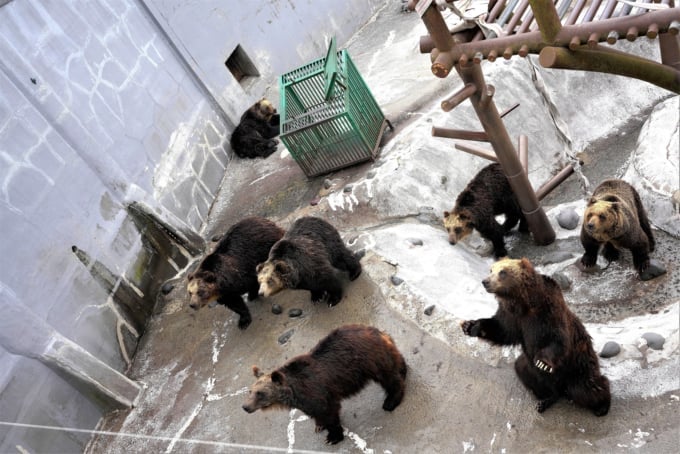
Located seven minutes by ropeway from the Noboribetsu Onsen base station, the Noboribetsu Bear Park is a unique wildlife attraction where visitors can observe Hokkaido's famous brown bears up close. The park houses around 70 bears, offering visitors a rare opportunity to interact with and learn about these magnificent creatures through various educational and interactive experiences.
One of the highlight activities is the bear-feeding experience, where visitors can purchase special snacks and throw them to the bears. The bears will often stand on their hind legs and make gestures, creating an adorable and memorable moment.
In addition, the park features a Bear Museum, where visitors can learn about the ecology, history, and significance of bears in Hokkaido. Another popular attraction is the "Human Cage", where visitors can see the world from a bear’s perspective, looking up at humans as if they were inside a bear enclosure.
For those who love scenic views, the park’s observation deck provides a breathtaking panorama of Lake Kuttara. Visitors can also browse the gift shop for exclusive bear-themed souvenirs.
The entrance fee includes the round-trip ropeway fare, making this an accessible and must-visit attraction for anyone exploring Noboribetsu Onsen.
Name: Noboribetsu Bear Park (のぼりべつクマ牧場)
Address: 224 Noboribetsu Onsencho, Noboribetsu, Hokkaido
Official Website:https://bearpark.jp/
10. Noboribetsu Marine Park Nixe
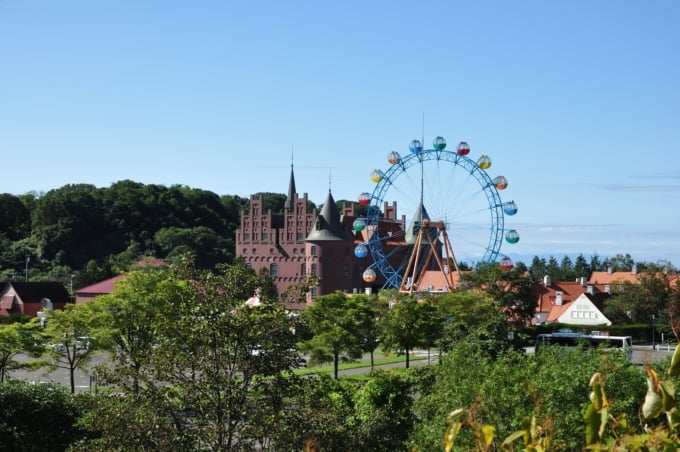
Noboribetsu Marine Park Nixe is a unique aquarium featuring a stunning exterior inspired by Denmark’s Egeskov Castle. Located in Hokkaido, this marine park offers visitors the opportunity to explore a variety of marine life in a captivating setting.
One of the highlights is the "Underwater Tunnel," where visitors can experience the sensation of walking beneath the sea. Giant sharks and graceful rays swim overhead, providing an immersive view of ocean life. Another must-see attraction is the "Penguin Parade," a charming event where adorable penguins waddle past spectators, bringing joy to visitors of all ages.
The park also features exciting sea lion and dolphin shows, showcasing impressive jumps and playful performances that delight both children and adults. For those who enjoy hands-on experiences, the interactive touch pool allows guests to feel sea creatures like sea urchins and starfish.
Beyond marine exhibits, the castle-like exterior provides excellent photo opportunities. Visitors can also shop for exclusive marine park souvenirs and local specialties, making it a perfect destination for families and photography enthusiasts alike.
Address: Noboribetsu Marine Park Nixe, 1-22 Noboribetsu Higashimachi, Noboribetsu, Hokkaido
Official Website:https://www.nixe.co.jp/
11. Noboribetsu Date Jidaimura
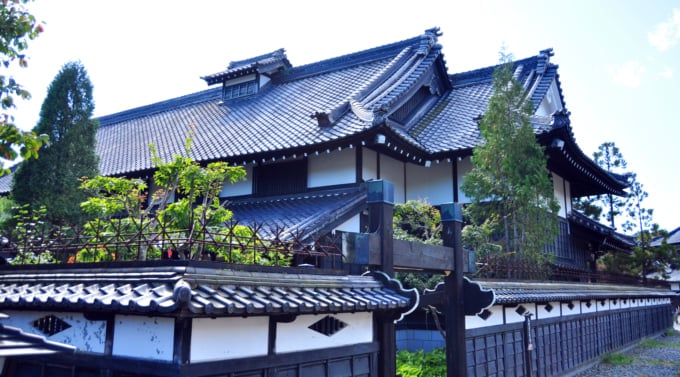
Noboribetsu Date Jidaimura is a cultural theme park that recreates the streets of the Edo period. Visitors can immerse themselves in traditional samurai and townspeople life, experiencing a time-travel-like adventure with historical buildings and interactive activities.
A major highlight is the Ninja Show, where thrilling action-packed performances keep the audience entertained. The park also features samurai plays and comedic stage performances, ensuring fun for visitors of all ages. For those who love hands-on experiences, attractions like shuriken (throwing star) practice and archery sessions offer an exciting taste of Edo-era martial arts and games.
For a complete experience, visitors can enjoy traditional Japanese cuisine at the park’s Edo-style restaurants. The souvenir shops offer unique gifts, including handcrafted Edo-period-inspired items and exclusive theme park merchandise.
Another popular activity is the photo session with kimono or samurai armor, allowing guests to capture special memories in an authentic Edo setting. Whether you're a history enthusiast, a family traveler, or someone looking for a unique cultural experience, this park provides an unforgettable journey into Japan’s past.
Address: Noboribetsu Date Jidaimura, 53-1 Nakanoboribetsu-cho, Noboribetsu, Hokkaido
Official Website:https://edo-trip.jp/
12. Sanlaiva Ski Resort
Located about a 15-minute drive from Noboribetsu Onsen, past Karurusu Onsen, Sanlaiva Ski Resort is a popular winter sports destination catering to skiers of all levels. Nestled in a vast natural landscape, the resort features seven well-maintained ski courses, each offering a different level of difficulty to suit beginners, intermediate, and advanced skiers.
For beginners and families, gentle slopes provide a safe and enjoyable skiing experience. Meanwhile, advanced skiers can challenge themselves with steep inclines and ungroomed courses for an adrenaline-filled adventure. Night skiing is also available, allowing visitors to enjoy the magical winter scenery under the starlit sky.
The resort offers rental services for skis and snowboards, making it easy for visitors to enjoy skiing without bringing their own gear. Additionally, ski lessons for beginners are available, ensuring a safe and fun introduction to the sport.
At the base of the ski slopes, a rest area and restaurant provide a cozy spot for relaxation and light meals. During the ski season, Sanlaiva Ski Resort attracts both tourists and local ski enthusiasts, making it a must-visit destination for a memorable winter experience in Noboribetsu.
Name: Sanlaiva Ski Resort
Address: 27 Karurusu-cho, Noboribetsu, Hokkaido
Official Website: http://www.sanlaiva.com/
13. Noboribetsu Cultural Exchange Center "Kanto Rera"
The Noboribetsu Cultural Exchange Center "Kanto Rera" is a dedicated space for experiencing and learning about Ainu culture. The name "Kanto Rera" means "Song of the Wind" in the Ainu language, symbolizing the center’s mission to preserve and pass down the spirit and traditions of the Ainu people to future generations.
Inside the facility, visitors can explore various exhibits showcasing Ainu history and lifestyle, including traditional costumes, handicrafts, and musical instruments. A popular highlight is the live demonstration of Ainu embroidery and wood carving, which offers a close-up look at these intricate artistic traditions. The center also hosts live Ainu music performances, traditional dance showcases, and Ainu cuisine tasting events, making it a rich cultural experience for visitors.
Important Notice: The Noboribetsu Cultural Exchange Center "Kanto Rera" is scheduled to relocate and merge with the Noboribetsu City Museum around September 2025.
Name: Noboribetsu Cultural Exchange Center "Kanto Rera"
Address: 123 Noboribetsu Onsen-cho, Noboribetsu, Hokkaido
Official Website: https://www.city.noboribetsu.lg.jp/docs/kantorera/
14. Noboribetsu City Museum & Cultural Heritage Center
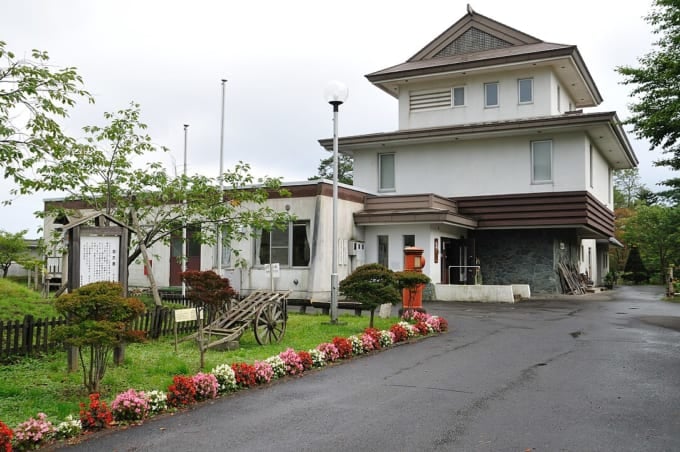
About 16 km southwest of Noboribetsu Onsen, you can explore the history and culture of the city at the Noboribetsu City Museum & Cultural Heritage Center.
Inside the museum, visitors can find exhibits showcasing everyday tools and industrial equipment used from the Meiji to the Showa era, along with historical materials related to Noboribetsu. The museum also features artifacts about the Katakura family, a group of Sendai domain warriors who settled in Noboribetsu during the Meiji period, as well as Ainu cultural exhibits, providing deeper insight into the region’s rich heritage.
Additionally, there is a section dedicated to Noboribetsu’s natural landscape and volcanic activity, making it a great place to learn about the area’s unique geology. Set in a peaceful environment, this museum is an excellent spot for those interested in local history and cultural traditions.
Name: Noboribetsu City Museum & Cultural Heritage Center
Address: 6-27 Katakura-cho, Noboribetsu City, Hokkaido
Official Website:http://www.city.noboribetsu.lg.jp/docs/2018052300045/
15. Noboribetsu Onsen Event Information
[Event 1] Jigokudani Demon Fireworks
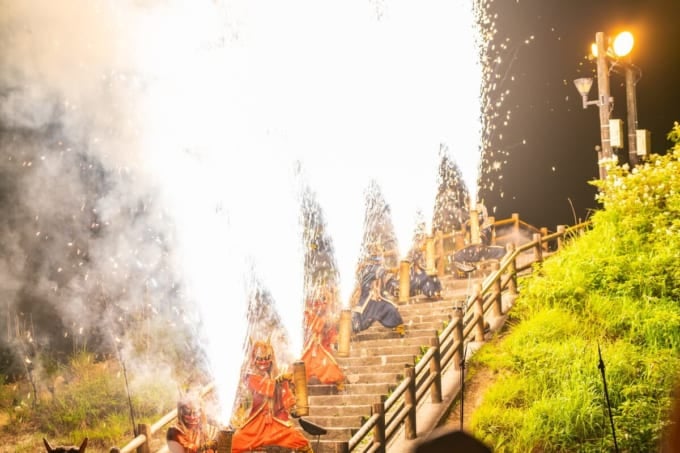
The Jigokudani Demon Fireworks is a spectacular event held at the Noboribetsu Hell Valley Observation Deck. This breathtaking show brings to life the legend of the "Yukijin" (Hot Spring Demon) who wields flaming torches while performing dynamic movements, illuminating the night sky with bursts of fireworks.
The red and blue demons perform powerful dances, creating an otherworldly and mesmerizing atmosphere against the rugged volcanic landscape of Hell Valley. This one-of-a-kind event captures the mystical essence of Noboribetsu Onsen, making it a must-see for visitors.
Event Name: Jigokudani Demon Fireworks
Dates: October 19 & 26, November 2 & 9 (2024), January 27, 28, 29, 30 (2025)
Time: 8:00 PM – 8:15 PM (Entry: 7:30 PM – 7:55 PM)
Location: Noboribetsu Hell Valley Observation Deck
Official Website:https://noboribetsu-spa.jp/experiences/#exblock_01
[Event 2] Restricted Area: Jigokudani (Hell Valley) Backyard Tour
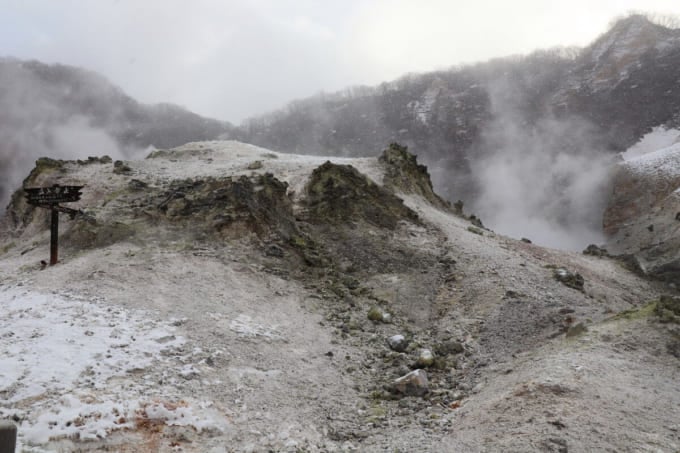
Join this exclusive Jigokudani Backyard Tour, where you can explore the restricted areas of Noboribetsu's Hell Valley—a place usually off-limits to visitors. Led by an expert guide, this special tour takes you behind the scenes of Hell Valley, offering a rare opportunity to witness geothermal activity up close and feel the incredible power of nature shaped by volcanic forces.
This small-group tour enhances the sense of exclusivity, and since it is held on an irregular schedule, be sure to check the official website for tour dates and reservations! The guide will provide in-depth explanations about volcanic activity and the formation of Jigokudani, making this a truly educational and immersive experience.
Tour Name: Restricted Area: Jigokudani Backyard Tour
Meeting Point: Noboribetsu Park Service Center
Official Website:https://noboribetsu-spa.jp/experiences/#exblock_02
[Event 3] Noboribetsu Karurusu Ice Pillar Tour
Experience the magical winter phenomenon of ice pillars (Hyōjun) on this limited-time Ice Pillar Tour in Noboribetsu Karurusu. Ice pillars are unique, upside-down icicle formations found inside caves and under rock formations. They form when water seeps from the ground and freezes into tower-like ice structures, creating an otherworldly natural spectacle.
With a professional guide, you'll explore an old mining cave, where these mystical ice pillars can be found. Since this tour is limited to 10 participants per day, early reservations are recommended. Secure your spot through the official Noboribetsu Onsen website!
After the tour, relax and warm up at the famous Karurusu Onsen, a perfect way to end your winter adventure.
Tour Name: Noboribetsu Karurusu Ice Pillar Tour
Dates: January 30 & 31, February 6 & 7, 2025
Time: Starts at 9:00 AM (Meeting time: 8:45 AM, Ends at 1:00 PM)
Meeting Point: In front of Noboribetsu International Tourism & Convention Association
Official Website:https://noboribetsu-spa.jp/experiences/#exblock_03
◎ Best Tourist Attractions in Noboribetsu Onsen
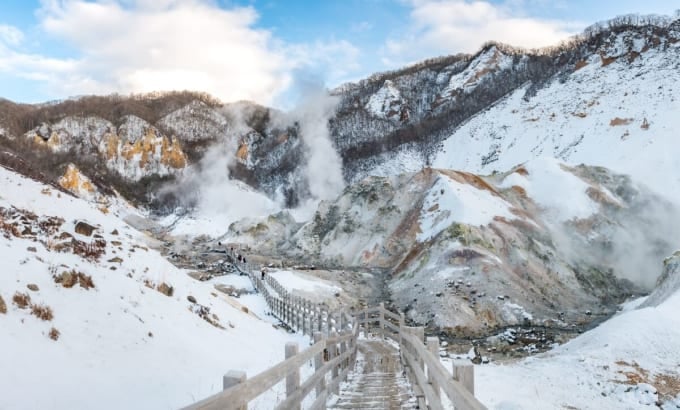
Noboribetsu is widely known for its hot springs, but there's more to explore beyond its famous onsen. From breathtaking natural landscapes to unique cultural experiences and seasonal events, Noboribetsu offers a diverse range of attractions. Plan your visit and discover the many charms of this iconic destination in Hokkaido!
RELATED ARTICLES
REGIONS
CATEGORIES
FEATURED ON travel
-
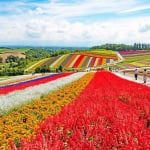
Where will you go for the summer vacation? Introducing recommended spots for domestic travel
-
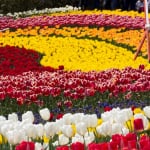
Kaizu City’s Recommended 7 Tourist Spots. Enjoy the Culture and History Nurtured by Wajū!
-
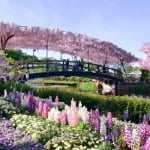
What Makes Ashikaga Flower Park So Special? A Treasure Trove of Photo-Worthy Spots!
-
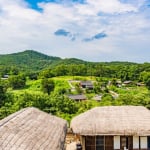
600 Years of Radiant Tradition: Korea’s Historic Villages of Hahoe and Yangdong
-
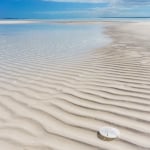
Two-Colored Seas and a Pink Beach! 4 Must-Visit Spots in North Eleuthera
MOST POPULAR ON travel
-
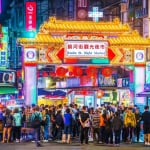 1
1How to Get to Taipei’s Raohe Street Night Market and Top Gourmet Spots
-
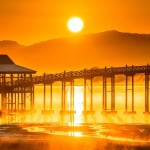 2
250 Must-Visit Tourist Spots in Aomori Prefecture|Area-Specific Travel Guide
-
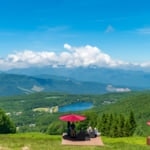 3
320 recommended sightseeing spots in Tateshina, Nagano Prefecture! Enjoy all seasons
-
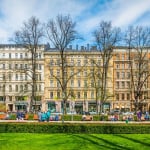 4
4Top 8 Shopping Spots in Finland for Nordic Design Enthusiasts
-
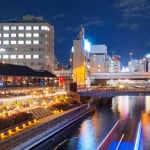 5
5Must-Visit Stylish Tourist Spots in Horie, Osaka!

